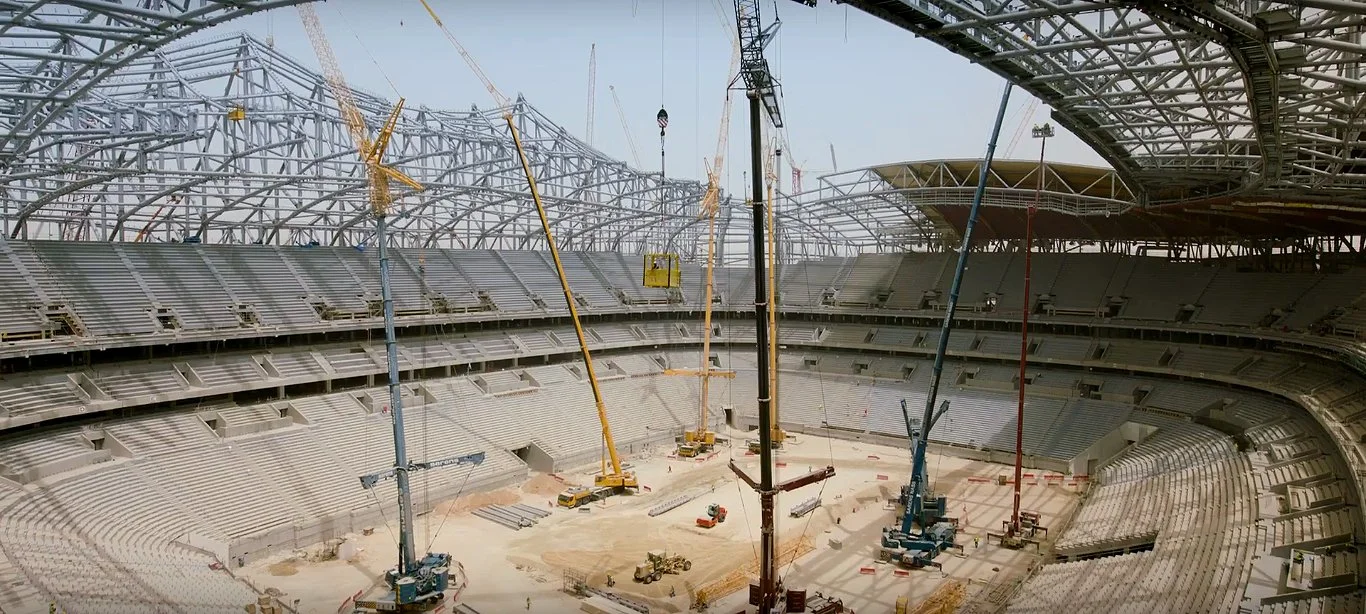When the world’s best players take the field in November, they will be playing in stadiums that at least 6,500 migrant workers died to build. It is believed that the number could actually be much higher, Of the countries that sent a large number of migrant workers to Qatar, India, Pakistan, Nepal, Bangladesh and Sri Lanka are the only ones that actually kept track of how many of their citizens have died. Since 2010, an average of 12 people have died each week constructing the World Cup infrastructure from these five countries alone. Other countries with a large number of workers in Qatar, including The Philippines and Kenya, have not kept track of fatalities. On average nearly two workers have passed away daily, listed officially as ‘natural causes.
Worst Storms in 30 Years Offer Europeans a Glimpse of Global South ‘Loss and Damage’
The same link must be drawn in developed countries as well. The UK and Europe storms are opportunity for these developed country citizens to recognize the pattern of loss and damage they’re starting to witness at home as well, and to hold their elected leaders to account for historic and continuing global emissions despite the dire warnings from the science community.
Madagascar is Struggling Under the Weight of Climate Change
Unfortunately for Madagascar, weather-related disasters aren’t the only challenges climate change poses. These back-to-back disasters come on the heels of one the worst droughts to hit the country in 40 years. The drought, which has primarily hit the southern part of the country, has placed an estimated 2 million in need of urgent food assistance.
Future Climate Floods Will Impact US Black Communities Worse
Of course the impacts of more frequent and intense storms aren’t financial only, but the longterm compounding effects they impose can be devastating. Those who can afford insurance now may find themselves priced out of the market, while those uninsured, will be even more dependent on unequal state and federal assistance, which bears the legacy of racism even in disaster.
Climate Change Displacing Already Vulnerable Iraqis; Spells Trouble for Region
With about 30 percent of Iraq covered in desert, all of these added climate problems, along with a population rapidly increasing, which we detailed in this earlier Spotlight, renders an already vulnerable population from conflict, geopolitical tensions, decades of sanctions, chronic poverty and corruption, rather fragile. It’s no wonder then that right now, thousands of families across Iraq continue to be displaced from their homes in rural parts of the country due to the loss of arable land and water scarcity.
Tropical Cyclone Cody Strikes Secondary Displacement to Fiji's Climate Displaced
Of those evacuees, The Fiji Times is reporting, 200 include “climate change refugees in Dreketi who were relocated more than a year ago” in the wake of cyclone Ana last year. The 200 villagers were relocated last from Navabatu last January after the storm’s impact sustained cracks in infrastructure.







